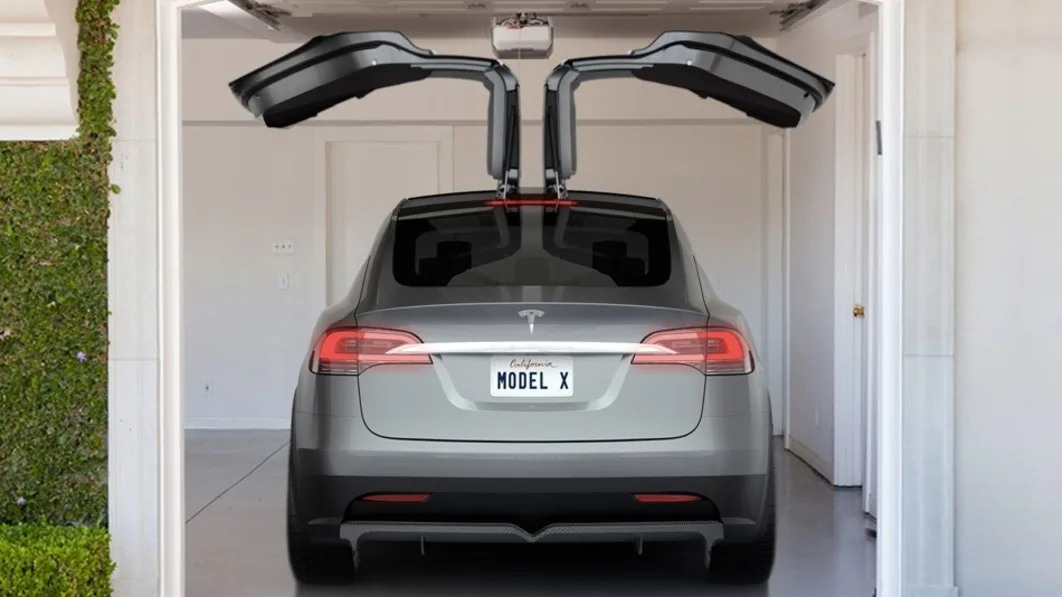[ad_1]

You won’t hear me singing Tesla’s praises very often. I have no problem with electric cars; in fact, there are a few I even enjoy, though Tesla’s sloppy execution leaves a lot to be desired. But, to give credit where credit is due, I have to hand the company’s engineers one thing: The Model X’s Falcon doors, goofy and unnecessarily complex though they may be, are the right doors for a future family hauler. Why? Because they don’t swing.
Of the possible ways you could open a car door, the conventional swing-out door is the single worst possible solution for a family car. They’re large and unwieldy for children and impossible to situate with your hands full of toddler (or whatever it is you happen to be hauling). An unexpected gust of wind can yank it out of your hands — likely in the direction of something expensive — and even if there’s nothing to hit, there’s a chance the door’s momentum could damage its own hinges or, worse, tweak the actual door frame.
They’re equally impractical when it comes to implementing technological helpers. One-touch auto-open/close sliding doors are borderline no-brainers, but such simple solutions have no place on swinging doors because (go figure) they might hit something. We’ve known that swinging doors are not ideal on a family car for decades.
“If it’s so obvious that they’re crap, why don’t we use something else, smart guy?”
Well, vans have been offered with sliding doors for about as long as there have been vans. Admittedly, sliding doors have drawbacks. Their tracks need to be kept clean and free of debris, and if the car gets bent out of shape by an accident, the additional attachment points could make a sliding door more likely to bind up. They also carry with them some serious design baggage. That slider can’t just hang off the side of the car the way a hinged door can when it’s open; it actually has to slide somewhere.
None of that seems insurmountable, right? Surely, if Tesla can build a set of doors that opens up and out like some sort of fledgling Lamborghini crossed with a deranged flamingo, some simple, mechanical sliding doors should be well within the reach of modern engineering. If the Chrysler K chassis could do it, certainly any modern shell could follow suit. The problem is acceptance: Sliding doors are painfully dorky because they are associated with the cargo pants of familial conveyance.
Some people think Teslas are cool; few think minivans are cool. Yet they have this in common.
The sliding door seems to be the only thing apart from an arbitrary label that separates a conventional three-row CUV from a minivan. Both vehicles are car-based. Both are associated with child seats and spilled cereal. Neither leaves the garage when you’re going out with adult friends. But why is the stigma so much worse for the minivan than it is for any old Hondubaru? It’s simple: The minivan offers nothing above and beyond doing its job well.
A SUV can project rugged individualism, while a wagon is a symbol of automotive enthusiasm. The minivan offers little more than a suggestion of baseline fertility at worst and screams “I’m going to parent the **** out of this” at best, and no automotive stylist anywhere is rushing to their tablet to incorporate that into their next hot design. Tesla knew this; Falcon Doors exist because simple sliding doors would have been aesthetic suicide; that Tesla tried to remake something with a severe stigma speaks to just how far we’ve strayed.
Some say the Kia Carnival proves that minivans don’t have to look like minivans. Valid. Personally, I think it tries too hard to be something it’s not. I’ve watched enough Judd Apatow movies to know how that story ends. As long as sliding doors remain associated with minivans, we’ll just have to go on living in a world of oblivious parents and wicked door dings, silently hoping that some day, public opinion will come around.
Related video:
[ad_2]
Source link